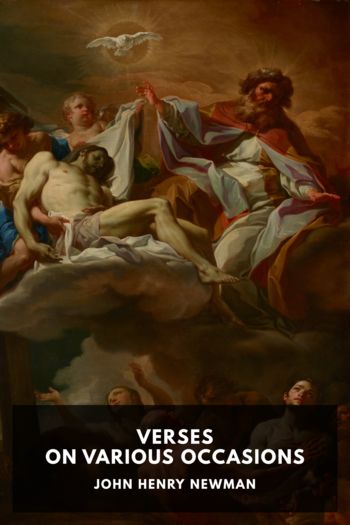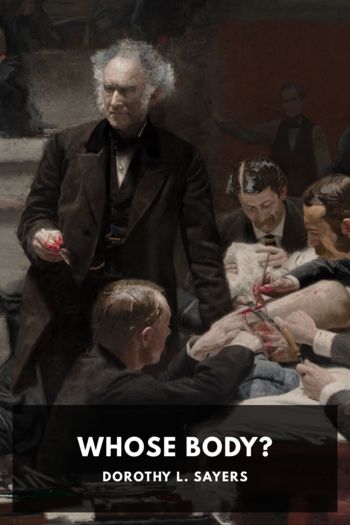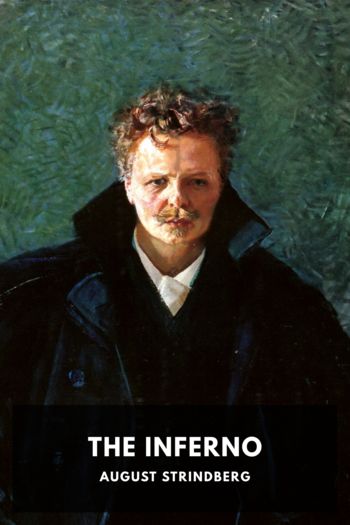The Divine Comedy, Dante Alighieri [best thriller novels of all time TXT] 📗

- Author: Dante Alighieri
Book online «The Divine Comedy, Dante Alighieri [best thriller novels of all time TXT] 📗». Author Dante Alighieri
In the palmy days of the monastery the Abbot of Monte Cassino was the First Baron of the realm, and is said to have held all the rights and privileges of other barons, and even criminal jurisdiction in the land. This the inhabitants of the town of Cassino found so intolerable, that they tried to buy the right with all the jewels of the women and all the silver of their households. When the law for the suppression of the convents passed, they are said to have celebrated the event with great enthusiasm; but the monks, as well they might, sang an Oremus in their chapel, instead of a Te Deum.
For a description of the library of Monte Cassino in Boccaccio’s time, see Note 1803. ↩
St. Benedict was born at Norcia, in the Duchy of Spoleto, in 480, and died at Monte Cassino in 543. In his early youth he was sent to school in Rome; but being shocked at the wild life of Roman school -boys, he fled from the city at the age of fourteen, and hid himself among the mountains of Subiaco, some forty miles away. A monk from a neighboring convent gave him a monastic dress, and pointed out to him a cave, in which he lived for three years, the monk supplying him with food, which he let down to him from above by a cord.
In this retreat he was finally discovered by some shepherds, and the fame of his sanctity was spread through the land. The monks of Vicovara chose him for their Abbot, and then tried to poison him in his wine. He left them and returned to Subiaco; and there built twelve monasteries, placing twelve monks with a superior in each.
Of the scenery of Subiaco, Lowell, Fireside Travels, p. 271, gives the following sketch:—
“Nothing can be more lovely than the scenery about Subiaco. The town itself is built on a kind of cone rising from the midst of a valley abounding in olives and vines, with a superb mountain horizon around it, and the green Anio cascading at its feet. As you walk to the high-perched convent of San Benedetto, you look across the river on your right just after leaving the town, to a cliff over which the ivy pours in torrents, and in which dwellings have been hollowed out. In the black doorway of every one sits a woman in scarlet bodice and white headgear, with a distaff, spinning, while overhead countless nightingales sing at once from the fringe of shrubbery. The glorious great white clouds look over the mountain-tops into our enchanted valley, and sometimes a lock of their vapory wool would be torn off, to lie for a while in some inaccessible ravine like a snowdrift; but it seemed as if no shadow could fly over our privacy of sunshine today. The approach to the monastery is delicious. You pass out of the hot sun into the green shadows of ancient ilexes, leaning and twisting every way that is graceful, their branches velvety with brilliant moss, in which grow feathery ferns, fringing them with a halo of verdure. Then comes the convent, with its pleasant old monks, who show their sacred vessels (one by Cellini) and their relics, among which is a finger-bone of one of the Innocents. Lower down is a convent of Santa Scolastica, where the first book was printed in Italy.”
In the gardens of the convent of San Benedetto still bloom, in their season, the roses, which the legend says have been propagated from the briers in which the saint rolled himself as a penance. But he had outward foes, as well as inward, to contend with, and they finally drove him from Subiaco to Monte Cassino.
Montalembert, Monks of the West, Authorized Tr., II 16, says:—
“However, Benedict had the ordinary fate of great men and saints. The great number of conversions worked by the example and fame of his austerity awakened a homicidal envy against him. A wicked priest of the neighborhood attempted first to decry and then to poison him. Being unsuccessful in both, he endeavored, at least, to injure him in the object of his most tender solicitude—in the souls of his young disciples. For that purpose he sent, even into the garden of the monastery where Benedict dwelt and where the monks labored, seven wretched women, whose gestures, sports, and shameful nudity were designed to tempt the young monks to certain fall. Who does not recognize in this incident the mixture of barbarian rudeness and frightful corruption which characterize ages of decay and transition? When Benedict, from the threshold of his cell, perceived these shameless creatures, he despaired of his work; he acknowledged that the interest of his beloved children constrained him to disarm so cruel an enmity by retreat. He appointed superiors to the twelve monasteries which he had founded, and, taking with him a small number of disciples, he left forever the wild gorges of Subiaco, where he had lived for thirty-five years.
“Without withdrawing from the mountainous region which extends along the western side of the Apennines, Benedict directed his steps towards the south, along the Abruzzi, and penetrated into that Land of Labor, the name of which seems naturally suited to a soil destined to be the cradle of the most laborious men whom the world has known. He ended his journey in a scene very different from that of Subiaco, but of incomparable grandeur and majesty. There, upon the boundaries of Samnium and Campania, in the centre of a large basin, half surrounded by abrupt and picturesque heights, rises a scarped and isolated hill, the vast and rounded summit of which overlooks the course of the Liris near its fountainhead, and the undulating plain which extends south towards the shores of





Comments (0)